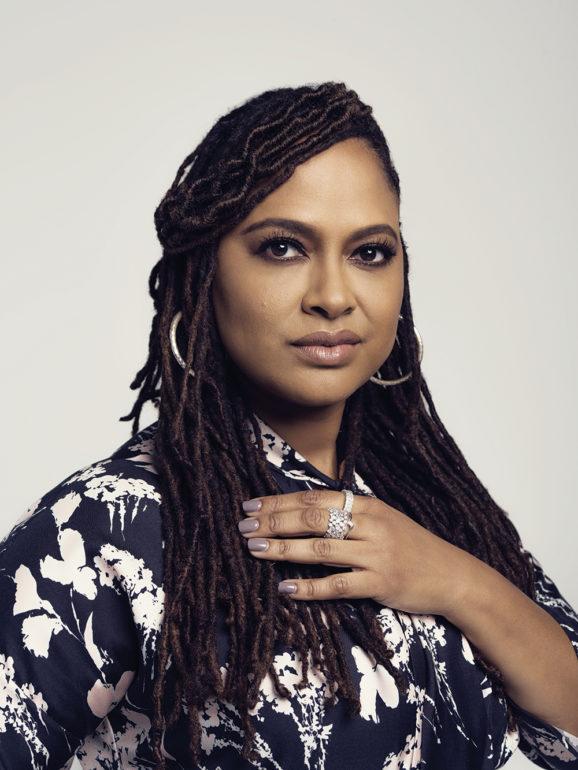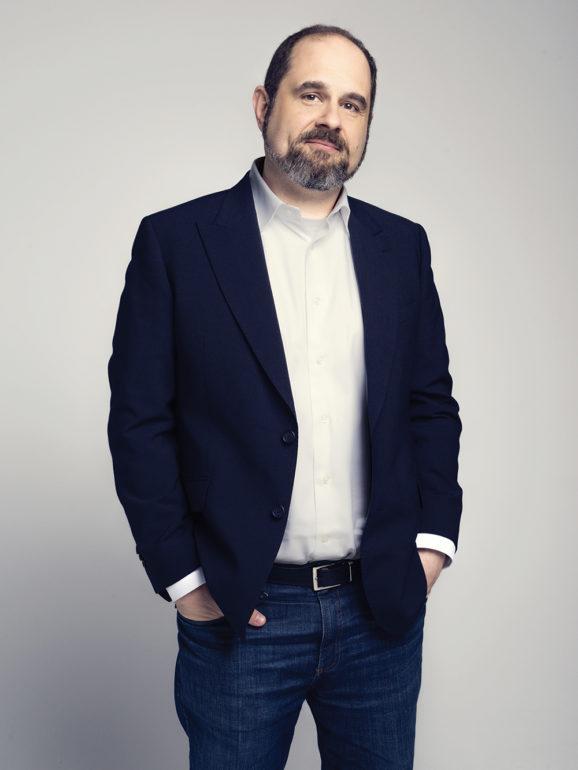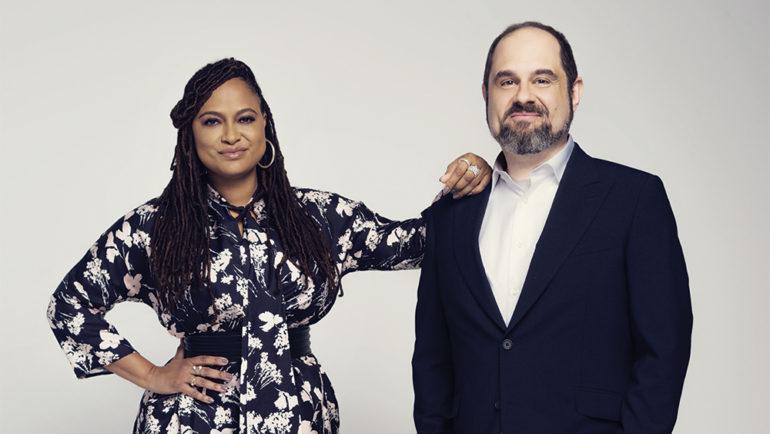Ava DuVernay and Craig Mazin on Portraying the Humanity Behind Historical Tragedies
By Danielle Turchiano
LOS ANGELES (Variety.com) – Limited series “Chernobyl” and “When They See Us” tell stories of traumatic events that both occurred in the late 1980s but were worlds apart. For the former HBO project, Craig Mazin tapped into the human cost after the 1986 nuclear power plant explosion in the Soviet Union, while for the latter Netflix show, Ava DuVernay dug deeper to get to know the boys who were labeled the “Central Park Five” after being arrested for rape in a 1989 case that generated national coverage. Sitting down at Variety, DuVernay and Mazin discussed the responsibility they felt to portray the humanity behind the people involved in the true tales, as well as the challenges that arose from mixing the outsider perspective of politics and the media with intimate moments between characters.
How did the politics of your geographical settings and time periods, coupled with the politics of today’s audience experiences, inform the way you wanted to tell these stories?
Mazin: I don’t want to tell stories from the past unless they have immediate relevance to now — otherwise you end up being homework. I don’t want to be the movie they show when the teacher’s out and the sub comes in; I want to be something that matters to people right now. In the case of “,” we’re telling a story of a government that runs on lies the way cars run on fuel, and there are people who ultimately end up paying the price for those lies — and a certain culture of denial is in place, and the degradation of expertise is in place. And right now, I think there is a global war on the truth. And so, the very first line is, “What is the cost of lies?” My entire point of the show is this specific thing — a reactor blowing up in the Soviet Union — that’s not going to happen again, at least not in that way, not here, but our government covering up, denying things, pretending things aren’t true because they don’t want them to be true, and then ultimately us — people — paying the price, we’re feeling that right now. I’m seeing that everywhere, not just in relation to climate change; I’m seeing it in terms of nationalism, the rise of people that are essentially just peddling hate, and we are living in a time now where the truth has become almost amusing — something you can mock and pretend isn’t important at all. So for me, this is why this is essential to tell now more than ever.
DuVernay: I worked really hard to not include my perspective on the person who we call the president in this piece. It could have been a very Trumpian piece. He figures into it but not in a large way, and so it took everything I had to focus on what my mission was, which was to tell the story of the boys — the accused — and their families. And so if I were functioning from a place of, “Let me get my jabs in,” I could have. But for me the priority was to say this was a story that spans 25 years, and different things were important to different men at different times, and my mission is to tell their story. At the time I’m portraying them at 14, 15, 16 years old, their primary concern was not what some rich white dude who had gold buildings said about them. The boys were concerned with, “I can’t go to school. I’m not at home.” It was very much about their day-to-day survival, but by prioritizing their story, I am speaking to all of the other black and brown people who are indicted by bias, their very presence criminalized. It’s not on its surface about integrating the present moment, but certainly the narratives go hand-in-hand.
How did you determine when to break out of the more intimate moments of humanity with the outside perspective of news footage?
DuVernay: For me that news footage is only there to stand as proxy for Trump’s voice. This could have been a piece where we had an actor playing Trump — and I explored it — but in saying, “No, my mission is to tell the boys’ stories that have not been heard for the past 30 years,” then I’m going to do that in every way, with all of the tools in my arsenal, including casting. He speaks for himself.
Mazin: It was the same for us. I think we showed two clips, and one was of Peter Jennings and one was Vremya, which was the national news in the Soviet Union, and in both cases it was just to show what people knew. In the West, what we were told initially was, “It appears to be something at a place called Chernobyl.” On the Soviet side, the point of the clip was to show how ridiculously underplayed it was. They literally pulled a 45-second thing in about “there was an accident, we’re taking care of it.” The purpose there was to show how media were so far behind on all sides.
DuVernay: I do think it’s fascinating, and part of our research to write the piece was in doing a deep dive on what the media was saying at the time because in our case it really shaped real-world outcomes — as it did in yours.
What was your gut check for making sure the intimate moments that don’t have source material from which to draw felt rooted in that person’s reality?
DuVernay: To tell the story of men who had been accused, convicted, punished, jailed, forgotten, re-entered into society as sexual predators — to finally give them a voice, it had to be all about them. So I had to know them, meet them, trust them, have them trust me. It was a four-year process of the research and writing, but all of that was completely, in my mind, adjacent to the main action, which was sitting down with the men in their living rooms, in restaurants, in my living room — anywhere that we could find — and hearing their stories. I made this for them to like it. I made this to give them a voice. It would have been a failure at the end if they had a problem with it. Before I shot, I did share the script with them. The main thing was to make sure it felt like them — “Is this you? Is this your experience?” In the case of Korey Wise, there’s a story in the fourth episode where we talk about Norman and Marci. No one has asked them anything about their lives; you don’t know anything about them. And the way I found out about it was a round-about way because the sister of another boy said, “Oh yeah I used to be in school with Korey’s older brother, Marci.” And I was like, “His older brother Marci?” And she was like, “Yeah, you know he was a little…” He was!? I went back to Korey, and I said, “Which of these brothers do you also call Marci?” “Oh Norman.” “OK, tell me about [that].” It was this incredibly beautiful story that says so much about the character but came from digging and other sources that allowed us to build. It had a lot of tentacles that allowed us to wrangle it in, but I’m not ashamed to say I wanted them to be happy with it and I wanted them to see themselves, and that’s different from the way I go about my documentary filmmaking, the way I went about historical drama like “Selma.” This was: I’m telling these real stories, so I better tell these real stories.
Mazin: For me, I tried to be guided by what I understood people’s intentions and beliefs were. I had enough evidence of behavior and some recorded words to build out from there. There’s a moment that was reported from the transcript of the trial where one of the men accused of being responsible denies that something happened that absolutely did — and gives an outrageous excuse for it. And from that I can calculate certain things, for instance, a dedication to denial and a stubborn insistence that “I’m not going down for this.” You pull emotional truth from that as best as you can. But we also had the benefit of a crew that largely grew up in Soviet Lithuania, and I had a woman who had grown up in Soviet Ukraine at the time whose job was just to read the scripts and tell me, “Yeah, OK, we would have done that” or not. Little things like not giving pets pet food but people food. Getting the details right is how we show respect.
The geography feels imperative to that. What were some of the challenges of re-creating these worlds when today’s physical landscape looks very different?
DuVernay: It’s been exactly 30 years, and it’s tough to make New York now look like New York then. Everything’s so clean and there’s a lot of glass now. The facades, the building codes and what is allowed now is completely different. I had an incredible production designer, a young black man named Akin McKenzie, and then it was really taking slices, like, “If we just look between here things could work.” So it was being really careful to do what I usually don’t like to do, which is construct the frame before I get there. And then we did pretty extensive visual effects to change the park: We had to take trees away, take lights away, break things digitally because they’ve fixed it and they don’t intend to let you and your Netflix money come in and mess it up again. They won’t even let you bring in fake litter.
“My mission is to tell the boys’ stories that have not been heard for the past 30 years.”
Ava Duvernay
Mazin: We had the benefit of shooting in a former Soviet republic, so that was actually quite helpful. Our job was to find places that the Lithuanians hadn’t revitalized. They are not fond of the Soviet era, but there are certain things that have been well-preserved, for instance, a building that was created in the early ’80s when Mikhail Gorbachev first came to power and if he ever visited Lithuania, this would be his building. So we were shooting in there because it was a beautifully preserved Soviet relic. And we were shooting in basically the sister power plant of Chernobyl, which was amazing because we got certain angles and looks there that we could have never gotten anywhere else in the world. But then we did have to create this town in the middle of this forest, essentially. So we had to find a town that could pass and lift it and put it in the forest, and take out satellite dishes and change vinyl windows to wood, and the cars.
How did living in the trauma of these stories for long periods of time affect the process?
Mazin: I would reach out to people if they were upset about things, and those moments were actually kind of beautiful because from a very selfish point of view, if you’re making something, you want to make sure everybody cares as much as you do. We would have moments because we were filming in a place where this cloud had gone over people where people got emotional, and I thought that was a sign we were doing something right. I want to wallow in it — I want to feel bad because it’s tragic and I don’t want to get disconnected from it.
DuVernay: On “Selma” I had to shoot three murders, riots, a lot of intense subject matter, and I learned afterwards a lot of the cast had real problems from some of the stuff they had to do. You’re a human being; that stuff matters; you’ve now lived trauma in your body — even though you’re doing it as an actor, your body doesn’t know that, and so I remembered thinking, “The next time I do something like this I’m going to care for my actors more.” So we had counselors available on the set for the most intense stuff and just available throughout the production on-call at any time in case anyone needed them. And that included the crew, who’s bearing witness to these things and facilitating these things — vfx people, editors have to look at that stuff over and over. It makes a difference. And because I’ve done it a few times, I know the devastating effects it can have.
And how does asking the audience to live in that trauma affect your hopes or expectations for the projects?
Mazin: Maybe at least for people living in America today, they feel a little bit more have an obligation to look at things they don’t want to look at. Of all the bad things internet has done for us, one of the good things is exposing us to people that were our neighbors and now we’re at happy to ask questions about things that we were otherwise willing to just walk by and not notice. Now we’re starting to feel an obligation to stop and take a look at ourselves and at other people that share our street, our city, our country, our world. And some of these stories demands that attention. And I hope that people who aren’t normally into these sorts of things will come to shows like Ava’s and hopefully shows like mine and say, “This feels like something that would be good for me to know. It would expand my understanding of people and where we are right now.”
DuVernay: I think that’s true for about half the country. There’s an other half that have clearly demonstrated that they’re not interested in other people and they’re not interested in knowing more, and so it is a fascinating time to have a country that is so split with people who give a damn about their neighbors and people who don’t and want to stay exactly who they are. I think your story will be readily consumed by more people than “.” “When They See Us” about Black people; your story is about what people would call Russia, and they can watch it for the place of being American, and more people have that in common here than they have in common with being Black or giving a damn about black people — with knowing anything about the criminal justice system or giving a damn about the criminal justice system. I think there are limits for what people want to know and want to see especially when you’re dealing with traumatic things. Some of the reasons I wanted to put this on Netflix, and why I wanted to put “13th” on Netflix, were I don’t believe white folks want to go to the movies — and I have evidence, I can give you box office figures — and feel badly about their whiteness, feel like they’re a part of a group that have done this. Not to get dressed up and go out, not to drive there. But I do believe, and I do know, and I do have evidence that people who never would have gone to see “13th” in a theater, that never would have gone to see this in a theater will watch it at home, safe. You need to be feel safe, physically, to watch it. That’s for white folks and for black folks. “12 Years a Slave” wasn’t a hot Friday night. It’s trauma; it’s personal; it’s intimate. I’ll watch it at home. So when we talk about form, I think the spaces and the presentation of the work is also something worthy of conversation.
Mazin: I absolutely agree with you, and I think it is an easier buy in, to some degree, to watch white people from another country fix their country. And I think sometimes white people look at a story about racial injustice or the faults of the criminal justice system of the United States as it relates to people of color, and they presume they are being accused of something. And that is something they need to get out of the way. If there’s any hope, it’s that I don’t see it as as much with people who are younger. And that’s my optimism.
DuVernay: I’m with you.
Mazin: If it’s 50 and 50, it becomes 60 and 40, 70 and 30, 80 and 20 and so on. Because it doesn’t seem like there’s that weird s— going on with my daughter and her generation. I stay optimistic because I don’t know what else to do, I guess. I hope that people do get over whatever is their issue — also if there’s part of themselves and their own history that they consider to be shameful, look at it. It’s not too late. It’s never too late.



